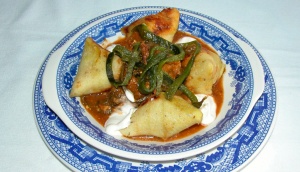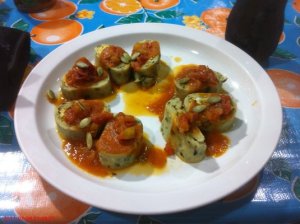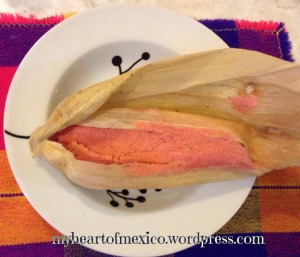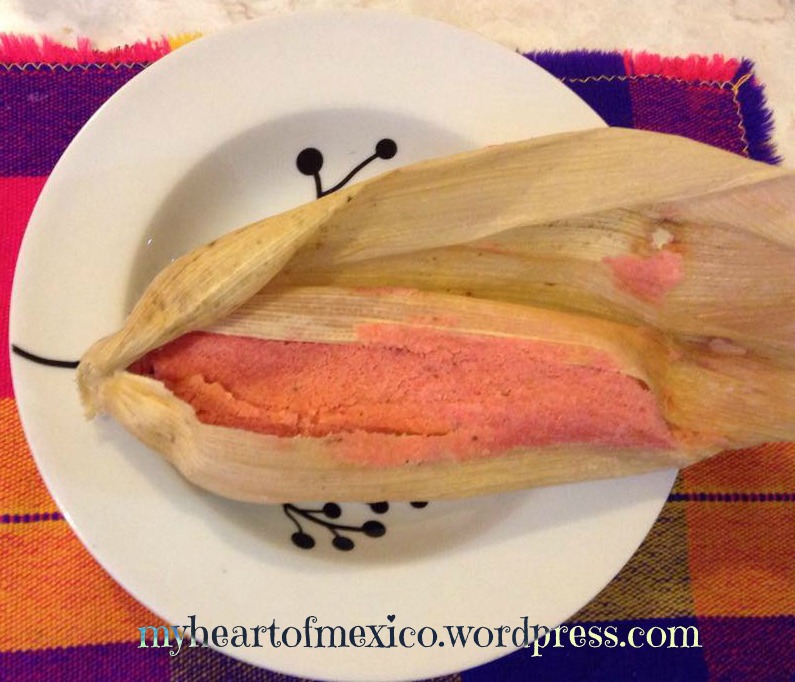Fabiola from myheartofmexico published an incredible document on Tamales that you must read if want to become an expert.
Tamales are one of the most iconic Mexican dishes ever. Along with tacos, they are arguably among the best-known kinds of Mexican food. Tamales are beloved in Mexico and abroad, and with good reason. They are soft, warm, tasty, delicious treats, and good for almost any occassion (even Christmas), special or otherwise.
Tamales are one of the most widespread dishes across Mexico, and some of the most popular foods too. You will never run into a single Mexican national who would turn down a serving of tamales. They’re just too good!
Unfortunately, if you don’t live in Mexico, you are missing out on some of the most delicious food.
We give you 20 facts about tamales that you probably were not aware of:
1. The word tamales comes from the ancient Aztec word “tamalli” which means “wrapped”. It’s obvious this refers to the way tamales are cooked wrapped in leaves (corn, banana or other).
2. Mexico is the birthplace of corn and, obviously, of tamales. They are so commonplace that every region has its own recipe. Probably every single “abuela” does too! It’s estimated that there are as many as 500 (or perhaps 5000, who knows?) different kinds of tamales in Mexico. You could eat tamales all your life and never get to taste them all!
3. Tamales are all made with corn dough and lard, wrapped in leaves, and steamed, but there are infinite variations to the basic recipe. They can be sweet or spicy. They can be filled with meat, pork, chicken, fish, cheese, vegetables, chili peppers, fruit, sauce, or nothing at all. They can be wrapped in corn husks, banana leaves, avocado leaves, maguey leaves, or even foil or plastic bags. Tamale creativity knows no bounds!
4. Tamales have been around since the dawn of civilization in the American continent. The ancient Olmecs and Maya made tamales, and so did the Aztecs. Their tamales were probably very different from modern-day recipes, but they were certainly made of corn dough and wrapped in leaves.
5. Tamales were likely eaten during holidays and festivities in ancient times, and that hasn’t changed much. Here in Mexico, tamales are served for almost any occasion: birthdays, christenings, Christmas, Day of the Dead, or any other special day. Also, you could just have them for breakfast. Or lunch. Or supper. Because, tamales are good on any ocassion!
6. The Aztecs had two holidays when tamales were the main dish. One was Atamalcualiztli, in which they celebrated the birth of the corn god. During that time, they had plain, unsalted tamales filled with vegetables that simbolized cleansing and renewal. The other festival was Izcalli, in honor of the god of fire. Tamales were specially made and distributed on that day.
7. Nowadays, tamales also have their special holiday. On January 6th, religious celebration of the Epiphany, Mexicans eat a special cake called “Rosca de Reyes” (the “rosca” custom comes from Spain), with a little figurine of baby Jesus hidden inside. If you get the lucky slice of cake with the figurine in it, then you have to provide tamales for the Candlemas party, on February 2nd. That’s the rule!
8. Aside from holidays and festivities, tamales are also appropriate for such ordinary occasions as breakfast or supper. In fact, every morning, you can find a lady selling tamales on almost every street corner in Mexico City. During the evening, you can hear vendors shouting, “Ricos Tamales Oaxaqueños!”. Actually, tamales could be classified as Mexican fast food, because you can just go out, buy some, and dig in.
9. Tamales may be fast food, but they are always homemade. There are people who make a living out of making tamales because there’s such a great demand for them. On estimate, about a hundred million tamales are eaten in Mexico every year. That’s a whole lot of corn dough!
10. Making tamales can be a massive undertaking. It usually requires more than one person, specially if you are making a lot of them. The normal amount of tamales you would make in one session could be about ten dozen of them. What? Couldn’t you make just a few of them? No, of course not! That is tamale blasphemy. It’s either a lot or none at all! You can always freeze them for later.
Different kinds of Tamales
It would be impossible to describe each and every one of all the different kinds of tamales that exist in Mexico, but we will try to mention the most important. Some of them are quite surprising!
11. In Chiapas province, tamales can take about 4 days to make, but they are some of the most delicious and renowned kinds of tamales there are. Most famous of all are the tamales de chipilín, made with a leafy green vegetable native to Mexico.

12. In Oaxaca province, tamales are made with the famous black mole, but there are other more exotic varieties. For example, there are iguana meat tamales. Does that sound tasty?

13. In the northern province of Sinaloa, there are tamales barbones with shrimp filling. They are made so that the long shrimp beards will stick out of the dough.

14. Michoacan state is famous for its corundas. These are little, triangular tamales filled with vegetables and cheese, and seasoned with tequesquite, a natural mineral salt.

15. The Yucatan peninsula has the most diverse kinds of tamales in Mexico. Some of them are tiny, and others are large enough for several people. This is also the home of the spiciest tamales in the country, made with habanero chilies, such as the famous brazo de reina.

16. In the central province of Guanajuato, there are tamales de muerto, or tamales for the dead, which are made out of blue corn. These tamales are laid out for the offering altars on the Day of the Dead.

17. In the Huasteca region (San Luis Potosí, Hidalgo and Veracruz), people make the largest tamales ever. They are called zacahuil, and they can be up to 10 feet long and weigh 100 pounds. These are made in large stone ovens and shared with the entire community.

18. In Veracruz, people make sweet corn tamales. Normal tamale dough is made out of corn boiled in lime powder. However, sweet corn dough is made out of ground, ripe corn kernels that haven’t been processed with lime. This makes for softer and sweeter tamales, but they are not sugary. The filling can be very spicy!

19. In Mexico City, you can find guajolotas, or tamale sandwiches. That’s right! It’s a tamale between two slices of white bread or “bolillo“. People buy these on street corners and order them to go so they can have their big, fat sandwich on their long commute to work (you can find a large number of people eating “Guajolotas” inside subway trains on their way to work). It’s a practical way to have breakfast, but it’s also a carb and calorie bomb. We’re not talking healthy eating here!

20. For the children, people usually make sweet tamales. In this case, sugar is added to the corn dough instead of salt, and it is also dyed pink. These tamales can have raisins or jam as filling. Sometimes, they are also made with pineapple or shredded coconut. There’s no better birthday food!



